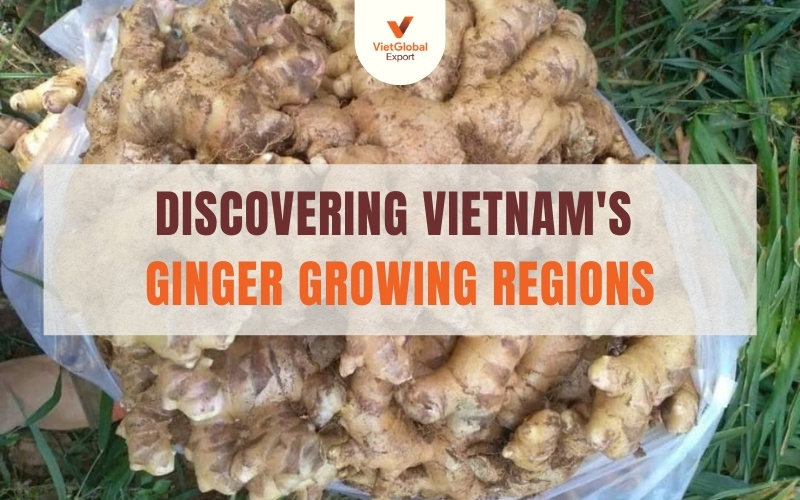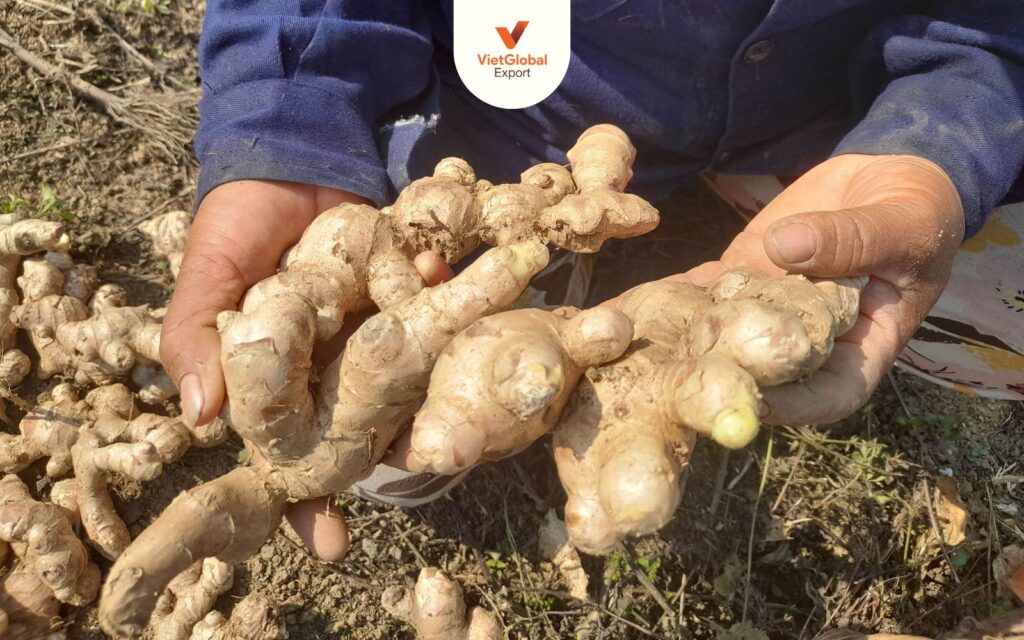Discovering Vietnam’s Ginger Growing Regions

Vietnam is renowned for its diverse agricultural landscape, and among its prized crops, ginger stands out as a vital spice with significant export potential. The country’s unique climate and rich soil contribute to the cultivation of high-quality ginger, making it a favorite in kitchens around the world.
In this article, we will explore the key ginger growing regions in Vietnam, the planting and harvesting seasons, popular varieties, and the types of ginger exported.
1. Ginger Growing Regions in Vietnam
Vietnam’s tropical climate creates ideal conditions for ginger cultivation. The average annual temperature ranges between 21°C and 27°C, with annual rainfall between 1,500 to 2,500 mm. Ginger thrives in areas with well-drained, loamy soil rich in organic matter.
Key growing regions include:
- Northern Provinces: Areas like Cao Bang, Lao Cai, Tuyen Quang, and Son La are known for their fertile mountainous terrain that supports robust ginger growth.
- Central Highlands: Regions such as Lam Dong, Gia Lai, and Dak Lak benefit from favorable climate conditions that enhance ginger quality.
- Mekong Delta: Provinces like An Giang, Soc Trang, and Vinh Long also contribute to the ginger supply, thanks to their rich alluvial soil.
These regions combine the right climate, soil quality, and water availability, making Vietnam a leading producer of fresh ginger.

2. Planting and Harvesting Seasons
Vietnamese farmers typically plant ginger during the warm spring months, from January to February or April to May. This timing allows the ginger to flourish during Vietnam’s hot and humid summer. In the northern regions, planting often occurs in early spring (February to March), while in the southern regions, it aligns with the onset of the rainy season.
Cultivation Practices
Farmers carefully prepare the soil to ensure it’s loose and rich in organic matter. They plant ginger rhizomes at a depth of about 5–7 cm, ensuring the buds face upward or sideways, then cover them with fine soil and press gently for good contact. Mulching with straw helps retain moisture and suppress weeds. Throughout the 8–10 month growing season, regular weeding and watering are essential to provide the necessary nutrients and moisture for the ginger to develop plump, flavorful rhizomes.
Harvest Season
As the weather cools between October and December, ginger reaches maturity. Signs of readiness include yellowing leaves and drying stems. Farmers carefully dig up the ginger clumps using shovels or forks to avoid damaging the valuable rhizomes. Post-harvest, ginger is sorted by size and quality, with the largest and healthiest rhizomes fetching the highest prices.
- Farmers can harvest young ginger after about 4 to 6 months, which is often sought after for its tender texture and mild flavor.
- Mature ginger takes around 8 months to develop fully. It is characterized by a stronger flavor profile and firmer texture.

3. Popular Ginger Varieties
Vietnam’s diverse climate and fertile soil create ideal conditions for cultivating various ginger varieties, each with distinct characteristics suited to different culinary applications.
Buffalo Ginger: Known for its large rhizomes, often exceeding 200 grams, buffalo ginger has a plump appearance with minimal branching and light-colored veins. It offers a milder spiciness compared to brown ginger, accompanied by a unique flavor profile that combines subtle heat with citrus and floral notes. This variety is commonly used in cooking, ginger tea production, and confectionery.
Brown Ginger: Smaller in size, with rhizomes typically weighing around 80 grams, brown ginger features more pronounced branching and a spicier taste. Its robust heat makes it a popular choice for producing ginger candy, ginger tea, and various traditional dishes.
While brown ginger primarily caters to domestic consumption due to its intense flavor, buffalo ginger is the predominant variety exported internationally, meeting global demand for its milder taste and versatility.

4. Exported Ginger Products
According to the Vietnam Pepper and Spice Association, in 2023, Vietnam’s ginger exports experienced significant growth, with nearly 35,000 tons of ginger, turmeric, and other spices exported, generating approximately $49.3 million in revenue—a 222.4% increase compared to 2022.
Main Export Markets
China emerged as the largest importer of Vietnamese ginger, accounting for 10,300 tons, followed by markets such as Bangladesh, India, Laos, and the United States.
Vietnam offers a variety of ginger products for export, including fresh ginger, dried ginger, ground ginger, ginger oil, and ginger tea, showcasing the country’s commitment to quality in the global spice trade.
Types of Exported Ginger
- Fresh Ginger: Highly sought after for its flavor and aroma; fresh Vietnamese ginger is popular among chefs worldwide who appreciate its quality.
- Whole Dried Ginger: Preserved for longer shelf life while maintaining essential oils and flavor; this product is favored by those looking for convenience without sacrificing taste.
- Sliced Dried Ginger: Conveniently sliced for easy use in cooking or as a health supplement; this form retains much of its nutritional value.

- Ginger Powder: Ground from dried ginger; it’s commonly used as a spice in various culinary applications.
Vietnam’s commitment to quality ensures that its ginger products meet international standards, making them popular choices among global buyers.
Conclusion
With its ideal growing conditions and diverse varieties, Vietnam continues to thrive as a leading producer of high-quality ginger. As demand for this versatile spice grows worldwide, VietGlobal Export remains dedicated to providing premium Vietnamese ginger products that enhance culinary experiences across the globe. Whether you’re looking for fresh or dried ginger products, we’ve got you covered!
For more information on our ginger offerings or to place an order, feel free to contact us today!
